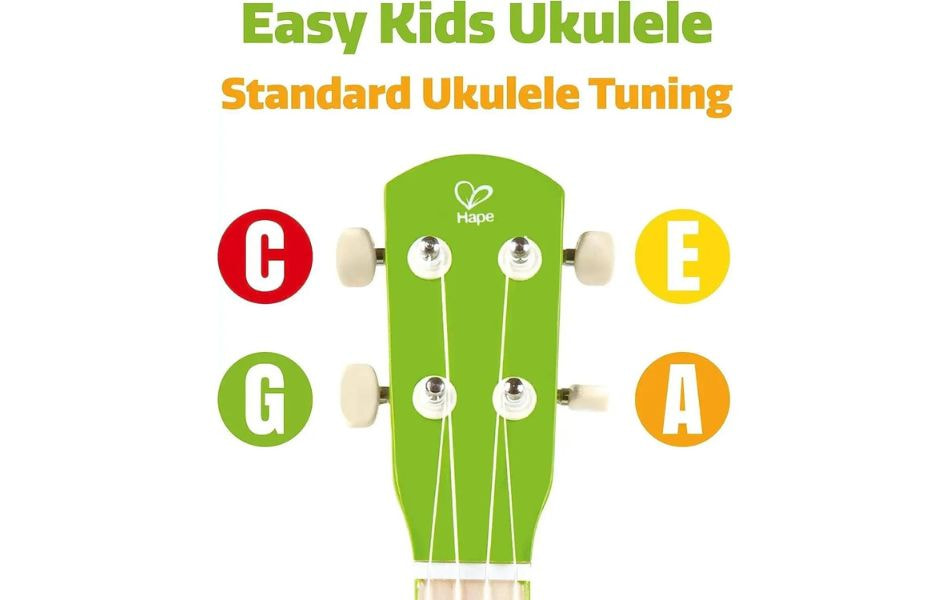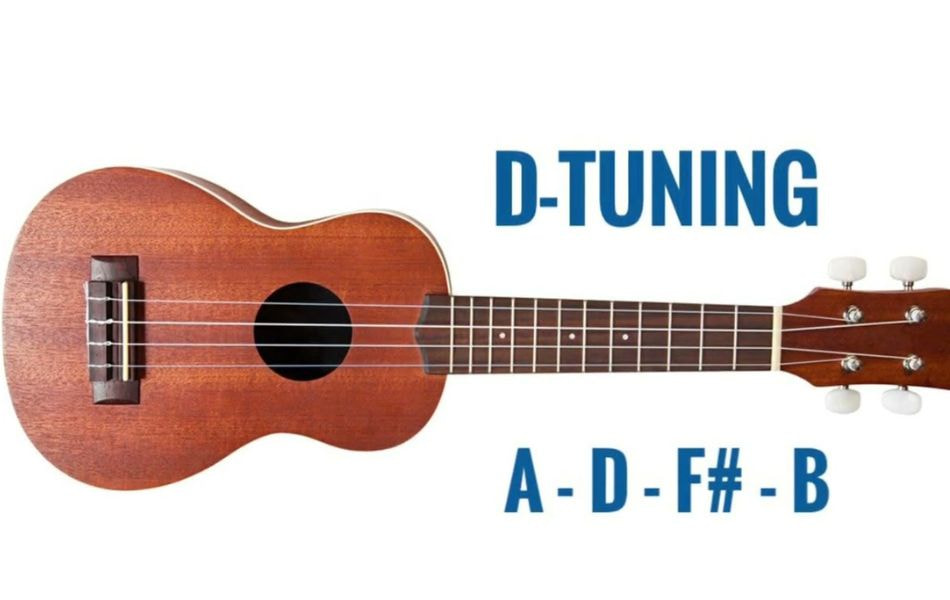While standard tuning (GCEA) is the most common tuning for the ukulele, there are several alternative tunings that are frequently used on soprano, concert, tenor, and baritone ukuleles. Becoming familiar with these different tuning for ukulele can be beneficial for players, even if they don’t plan on using them immediately.
Contents
How many kinds of tuning for ukulele
Ukulele tuning refers to the specific arrangement of pitches assigned to each string of the ukulele. There are indeed many different tunings for ukulele. Some of the most common tunings include:
- Standard Tuning (GCEA): This is the most common tuning for the ukulele, where the strings are tuned to G, C, E, and A from the lowest string to the highest string.
- Low G Tuning: Similar to standard tuning, but the G string is tuned an octave lower, providing a deeper sound.
- High G Tuning: Also similar to standard tuning, but the G string is tuned to a higher octave, which can give a brighter sound.
- Baritone Tuning (DGBE): Used for baritone ukuleles, where the strings are tuned similarly to the top four strings of a guitar.
- Slack-key Tuning: This tuning style originates from Hawaii and involves loosening the strings to create a more open and resonant sound. It’s less common but can be used on various ukulele sizes.
- Slide Tuning: Tuning used in slide guitar playing
Characteristics of the different tuning for ukulele
Standard ukulele tuning
Standard tuning for the ukulele, often referred to as GCEA tuning, is the most common tuning used and typically involves tuning the strings to the following pitches:
G string (4th string): G
C string (3rd string): C
E string (2nd string): E
A string (1st string): A

The G string is typically tuned to the lowest pitch, followed by the C, E, and A strings in ascending order. This tuning provides a balanced set of pitches that allow for playing a wide variety of music genres and styles on the ukulele. It’s the tuning that most beginners start with and is widely used in ukulele instruction materials and songbooks.
Standard tuning for the ukulele is often referred to by different names, including C-tuning, standard tuning, High G tuning, or re-entrant tuning. The strings are typically noted down as gCEA or G4 C4 E4 A4. This tuning involves the G string being tuned to a higher octave, which is why it’s sometimes called “re-entrant” tuning.
It’s widely used by players of all levels, from beginners to advanced musicians, and it’s the tuning most commonly taught in ukulele lessons and tutorials. Standard tuning provides a balanced set of pitches that allow for playing a wide range of music genres and styles, making it versatile and accessible for players of all musical interests.
Low G tuning
In low G tuning for the ukulele, all strings are tuned as they would be in standard tuning (GCEA), but the G string is tuned an octave lower than usual, resulting in a deeper pitch.
In low G tuning, the strings are typically tuned as follows:
G string (4th string): Tuned to G, but one octave lower than the G string in standard tuning.
C string (3rd string): Tuned to C.
E string (2nd string): Tuned to E.
A string (1st string): Tuned to A.
This alteration to the tuning provides a broader range of pitches and adds depth to chord voicings and melodies, enhancing the overall tonal palette of the ukulele. It’s a popular choice for players looking to explore different sounds and musical expressions on the instrument.
D Tuning
“D tuning” on the ukulele typically refers to a specific tuning where the strings are tuned to the pitches D, A, F#, and B, respectively. This tuning is often used for the baritone ukulele.
In D tuning, the strings are typically tuned as follows:
D string (4th string): D
A string (3rd string): A
F# string (2nd string): F#
B string (1st string): B

Baritone ukuleles are the most commonly associated with D tuning. The baritone ukulele is larger than other ukulele sizes and is often tuned differently. Its tuning is closer to the top four strings of a guitar, making it appealing to guitarists transitioning to the ukulele.
D tuning on the baritone ukulele provides a unique tonal quality, and its similarity to guitar tuning can make it easier for guitarists to play. However, it’s less common on soprano, concert, or tenor ukuleles, which are more commonly tuned to GCEA or other variations of re-entrant tuning.
Baritone Tuning
One of the different tunings for ukulele is baritone tuning. Baritone tuning (DGBE) is indeed used for baritone ukuleles, and it is similar to the top four strings of a guitar. In baritone tuning, the strings are typically tuned as follows:
D string (4th string): D
G string (3rd string): G
B string (2nd string): B
E string (1st string): E
This tuning is indeed similar to the top four strings of a guitar (hence the similarity to guitar tuning), which can make it easier for guitarists to transition to playing the baritone ukulele.
It is typically only suitable for baritone ukuleles and is not suitable for other types of ukuleles such as soprano, concert, or tenor. The main reason for this is the difference in size and structure between the various types of ukuleles.
Baritone ukuleles are larger in size and are typically tuned similarly to the top four strings of a guitar, creating a sound and playing feel that is similar to that of a guitar. In contrast, other types of ukuleles are often tuned using re-entrant tuning styles such as standard tuning (GCEA), Low G, High G, or other tuning styles.
Slack-Key tuning
Slack-key tuning” is a special tuning method primarily used in ukuleles in Hawaii. The tuning is not just a tuning method but also a distinctive playing style of guitars and ukuleles in Hawaii. Slack-key artists often utilize various fingerpicking techniques and use slides to create unique and rich sounds.

There are indeed different versions of slack-key tuning, but one of the most commonly used ones is the “open G” or “taro patch” tuning. However, when applied to the ukulele, it’s often referred to as “C taropatch” tuning. In this tuning, the ukulele is tuned five steps higher than the guitar.
To create C taropatch tuning on the ukulele, you would tune the A string down one whole step to G. Then, strumming the open strings would give you a ukulele slack key tuning of G-C-E-G.
Slide Tuning
When referring to “slide tuning” for ukulele, you’re suggesting a specific tuning alteration that involves changing one of the standard tuning notes to accommodate slide playing. By changing the A string to Bb (or A#), the resulting tuning becomes G-C-E-Bb, which forms a C7 chord.
This alternative tuning allows for different chord voicings and slide playing techniques, providing a unique sound and musical possibilities on the ukulele. It’s worth noting that altering the tuning in this way can open up new creative avenues and offer fresh sounds, particularly suitable for slide playing styles.
So, pick up your ukulele, embrace the adventure, and let the strings resonate with the melodies of possibility. With these different tuning for ukulele, a world of musical expression awaits, inviting players to chart their own path and create music that resonates with the soul.
Ukulele Tuner app and Guitar Tunio tuner app are two utility applications designed specifically to assist ukulele and guitar players in tuning and adjusting the sound of their instruments. With versatile features and ease of use, both applications provide a range of common and frequently used tuning styles for the ukulele.
